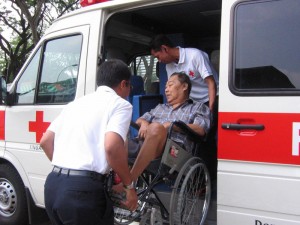Emergency Medicaid for pregnant women is a vital resource that ensures access to healthcare for those who find themselves in urgent need. This program offers essential coverage to pregnant women who are not eligible for regular Medicaid but require immediate medical assistance. Understanding the benefits, qualification criteria, application process, coverage, limitations, and finding healthcare providers are crucial for those seeking emergency Medicaid. In this comprehensive guide, we will explore all these aspects and provide valuable tips for advocating for emergency Medicaid coverage.
Understanding the Benefits of Emergency Medicaid for Pregnant Women
Emergency Medicaid for pregnant women provides a lifeline for those facing urgent medical needs during pregnancy. This program covers a wide range of healthcare services, ensuring that expectant mothers receive the necessary care to safeguard their health and the well-being of their unborn child. Some of the key benefits of emergency Medicaid for pregnant women include:
- Access to prenatal care, including regular check-ups, ultrasounds, and lab tests
- Coverage for delivery and postpartum care
- Emergency medical services for unforeseen complications during pregnancy
- Prescription medications related to pregnancy
- Mental health services for maternal well-being
Qualification Criteria for Emergency Medicaid during Pregnancy
To qualify for emergency Medicaid during pregnancy, certain criteria must be met. While the specific requirements may vary by state, the general guidelines include:
- Proof of pregnancy: Providing documentation, such as a positive pregnancy test or a doctor’s confirmation, is typically required.
- Residency: Most states require pregnant women to be residents of the state in which they are seeking emergency Medicaid.
- Income eligibility: Emergency Medicaid is designed for low-income individuals. Meeting the income requirements is crucial for qualification.
- Non-eligibility for regular Medicaid: Pregnant women who do not qualify for regular Medicaid due to immigration status or other reasons may be eligible for emergency Medicaid.
Navigating the Application Process for Emergency Medicaid
The application process for emergency Medicaid can vary depending on the state. It is essential to understand the specific requirements and procedures in your state. However, the general steps involved in applying for emergency Medicaid during pregnancy are as follows:
- Gather necessary documentation: Collect all the required documents, such as proof of pregnancy, residency, and income.
- Complete the application form: Fill out the application form accurately and provide all the necessary information.
- Submit the application: Submit the completed application along with the required documentation to the appropriate Medicaid office or online portal.
- Follow up: It is crucial to follow up on your application to ensure it is being processed. Contact the Medicaid office if you have not received a response within a reasonable time frame.
Exploring the Coverage and Limitations of Emergency Medicaid
Emergency Medicaid provides coverage for a range of healthcare services, but it is important to be aware of its limitations. While the specifics may vary, the coverage typically includes:
- Prenatal care: Regular check-ups, lab tests, ultrasounds, and screenings
- Delivery and postpartum care: Coverage for labor and delivery, postnatal check-ups, and necessary follow-up care
- Emergency medical services: Coverage for unforeseen complications during pregnancy that require immediate medical attention
However, emergency Medicaid may have limitations in terms of coverage duration and postpartum care. It is crucial to understand these limitations and explore additional resources if needed.
Finding Healthcare Providers that Accept Emergency Medicaid
One of the challenges faced by pregnant women seeking emergency Medicaid is finding healthcare providers who accept this coverage. Not all healthcare providers participate in Medicaid programs, including emergency Medicaid. To find healthcare providers that accept emergency Medicaid, consider the following steps:
- Contact the Medicaid office: Reach out to your state’s Medicaid office for a list of healthcare providers who accept emergency Medicaid.
- Use online directories: Utilize online directories that allow you to search for healthcare providers by specific insurance plans, including Medicaid.
- Network with other recipients: Seek recommendations from other emergency Medicaid recipients who have already found healthcare providers that accept this coverage.
Tips for Advocating for Emergency Medicaid Coverage
Advocating for emergency Medicaid coverage can be a daunting task, but it is essential to ensure access to crucial healthcare services during pregnancy. Here are some tips to help you navigate the process:
- Seek assistance: Reach out to local organizations or advocacy groups specializing in healthcare access to get guidance and support.
- Document everything: Keep detailed records of your application, communication with Medicaid offices, and any additional steps you take during the process.
- Be persistent: Follow up regularly on your application, and don’t hesitate to escalate the issue if you encounter delays or difficulties.
- Know your rights: Familiarize yourself with the laws and regulations surrounding emergency Medicaid to ensure you are aware of your entitlements.
Frequently Asked Questions about Emergency Medicaid for pregnant women
Q: What is emergency Medicaid for pregnant women?
A: Emergency Medicaid for pregnant women is a program that provides immediate healthcare coverage for pregnant individuals who do not qualify for regular Medicaid.
Q: How do I qualify for emergency Medicaid during pregnancy?
A: To qualify for emergency Medicaid during pregnancy, you generally need to provide proof of pregnancy, residency, meet income eligibility criteria, and not be eligible for regular Medicaid.
Q: What services does emergency Medicaid cover?
A: Emergency Medicaid typically covers prenatal care, delivery, postpartum care, and emergency medical services related to complications during pregnancy.
Q: How can I find healthcare providers that accept emergency Medicaid?
A: You can contact your state’s Medicaid office, use online directories, or seek recommendations from other emergency Medicaid recipients to find healthcare providers that accept this coverage.
Q: How can I advocate for emergency Medicaid coverage?
A: Seek assistance from local organizations, document everything related to your application, be persistent in following up, and educate yourself about your rights regarding emergency Medicaid.
Expert Advice on Emergency Medicaid for pregnant women
Expert advice coming soon.
